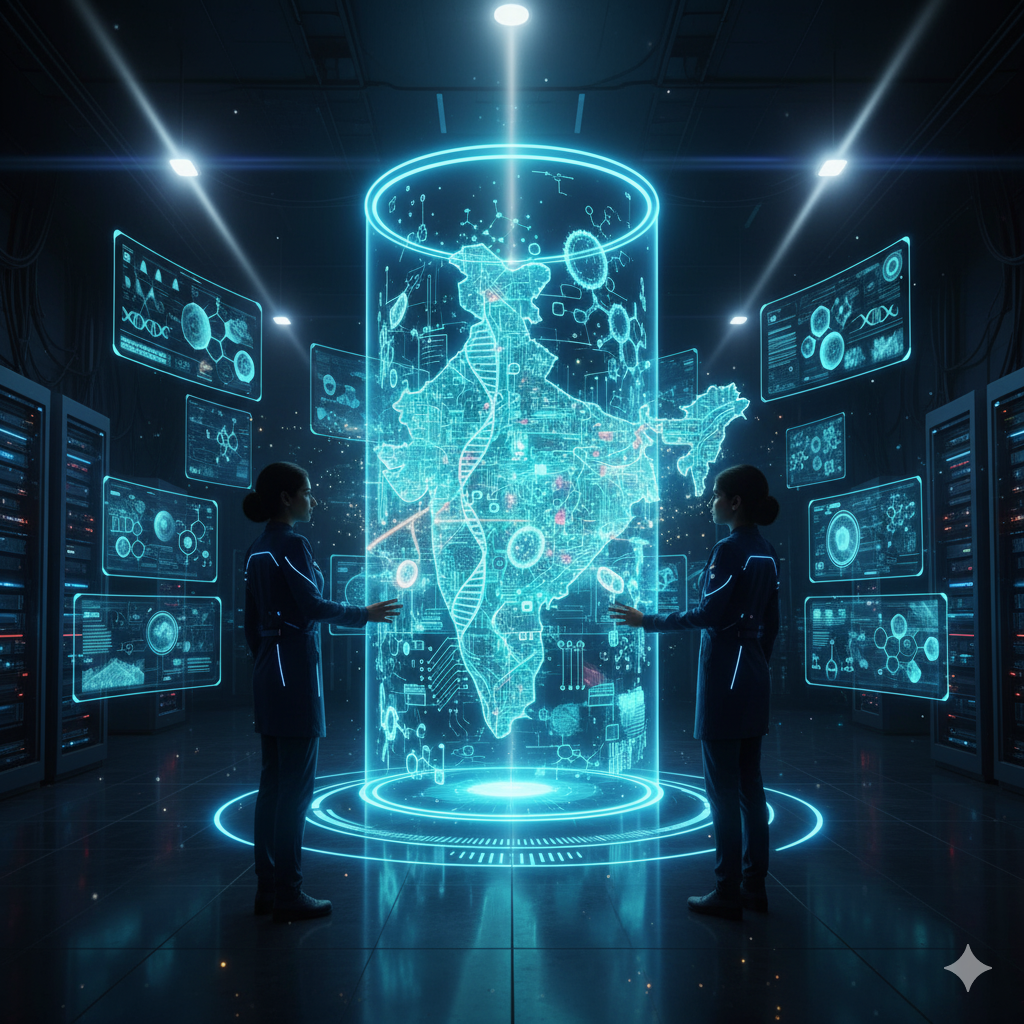Introduction
In the rapidly evolving global economy, supply chains have become more complex, dynamic, and customer-focused. Traditional supply chain models often struggle with inefficiencies, delayed communication, limited visibility, and reactive decision-making. This is where the Internet of Things (IoT) emerges as a transformative force, enabling real-time data exchange and intelligence across all nodes of the supply chain.
IoT-enabled Supply Chains refer to the integration of smart sensors, connected devices, and real-time data analytics within the supply chain infrastructure to enhance transparency, improve efficiency, ensure traceability, and reduce operational costs. From sourcing raw materials to final delivery, IoT technologies provide end-to-end visibility and automation that were once unimaginable.
This article explores the key components, applications, benefits, challenges, and future of IoT in supply chain management.
Understanding IoT in the Context of Supply Chains
The Internet of Things (IoT) is a network of physical objects — such as sensors, RFID tags, GPS trackers, smart devices, and vehicles — embedded with technologies to connect and exchange data with other systems over the internet.
In a supply chain, IoT devices collect and transmit real-time data across various touchpoints — procurement, warehousing, transportation, inventory management, and retail — enabling proactive and automated decision-making.
Core Technologies Enabling IoT-based Supply Chains
- RFID (Radio Frequency Identification)
- Tags attached to products or pallets communicate location, status, and identification.
- Useful for real-time inventory tracking and anti-theft applications.
- Smart Sensors
- Measure temperature, humidity, pressure, vibration, or shock.
- Widely used in cold chain logistics and sensitive goods transportation.
- GPS and Geo-fencing
- Real-time tracking of vehicle location, routes, and delivery status.
- Geo-fencing alerts when a vehicle enters or exits a specific boundary.
- Edge Devices and Gateways
- Act as local processing units that collect and analyze data before sending to cloud platforms.
- Act as local processing units that collect and analyze data before sending to cloud platforms.
- Cloud Computing & Big Data Analytics
- Massive datasets generated from IoT devices are stored and processed to derive insights, forecasts, and decisions.
- Massive datasets generated from IoT devices are stored and processed to derive insights, forecasts, and decisions.
- Blockchain Integration (Optional)
- Ensures secure and tamper-proof recording of all IoT-based transactions, especially in multi-party logistics systems.
Applications of IoT in Supply Chain Management
1. Real-time Inventory Management
- IoT devices provide visibility into inventory levels, movement, and stockouts.
- Warehouses can automatically reorder supplies when thresholds are reached.
- Reduces the risk of overstocking or understocking.
2. Smart Warehousing
- Sensors and robotics optimize warehouse operations like picking, sorting, and shelving.
- Autonomous guided vehicles (AGVs) and drones improve internal logistics and monitoring.
3. Fleet and Transportation Monitoring
- GPS and telematics systems track delivery vehicles in real time.
- Data on fuel usage, driver behavior, route efficiency, and delays improve logistics planning.
- Predictive maintenance reduces vehicle downtime.
4. Cold Chain Logistics
- Smart sensors maintain and report temperature, humidity, and shock conditions.
- Essential for pharmaceuticals, perishable foods, and chemicals.
- Alerts triggered for threshold breaches allow immediate corrective actions.
5. End-to-End Traceability
- Products can be tracked from origin to destination, enhancing transparency and accountability.
- Helps ensure compliance, reduce counterfeiting, and facilitate product recalls.
6. Demand Forecasting and Planning
- Historical data combined with real-time consumption trends allows for more accurate demand planning.
- AI and ML models refine forecasts using IoT data.
7. Customer Experience Enhancement
- Customers can track the status of their deliveries in real time.
- Predictive delivery times and instant alerts improve satisfaction.
Sector-wise Implementation of IoT-enabled Supply Chains
1. Retail
- Smart shelves, RFID-enabled checkout, automated restocking.
- Real-time customer behavior tracking and analytics.
2. Agriculture
- Sensors track soil health, crop growth, and weather conditions.
- IoT-enabled logistics for transporting produce in optimal conditions.
3. Pharmaceuticals
- IoT ensures cold storage and proper handling of medicines and vaccines.
- Complete traceability from manufacturing to pharmacies.
4. Manufacturing
- IoT connects factory floors with distribution systems.
- Enables just-in-time inventory and production scheduling.
5. Automotive
- Tracks part sourcing, assembly, distribution, and vehicle servicing.
- Enhances warranty management and defect tracking.
Benefits of IoT in Supply Chains
1. Improved Visibility
- IoT enables real-time monitoring and location tracking at every point in the supply chain.
- Enhances transparency and reduces uncertainties.
2. Operational Efficiency
- Automated processes reduce human error and increase speed.
- Predictive maintenance minimizes unplanned downtime.
3. Cost Reduction
- Optimized routes, reduced spoilage, and efficient inventory reduce overall logistics costs.
- Automation lowers labor and administrative costs.
4. Better Risk Management
- Early warning systems identify risks like theft, spoilage, or route delays.
- Proactive decisions reduce the impact of disruptions.
5. Sustainability
- Improved resource utilization and reduced waste support green supply chain goals.
- Helps companies meet ESG (Environmental, Social, Governance) targets.
Challenges in Adopting IoT in Supply Chains
1. High Initial Investment
- Implementation of IoT infrastructure and training personnel can be capital-intensive.
2. Data Security and Privacy
- A vast amount of sensitive data is generated, which must be secured against cyber threats.
3. Integration with Legacy Systems
- Many supply chain systems are outdated and not compatible with modern IoT platforms.
4. Data Overload
- Without proper analytics, large volumes of data can overwhelm organizations instead of helping them.
5. Interoperability Issues
- Different devices and platforms may not communicate seamlessly.
- Lack of standardization affects scalability.
Real-World Examples of IoT-enabled Supply Chains
1. Amazon
- Uses robots, sensors, and computer vision in warehouses for rapid fulfillment.
- Real-time order tracking enhances customer satisfaction.
2. DHL
- Implements IoT in warehouses using smart glasses, AGVs, and parcel tracking sensors.
- Improved accuracy and turnaround time in logistics.
3. Walmart
- Uses IoT for cold chain logistics to monitor food safety.
- Smart replenishment systems based on sensor data.
4. Maersk
- Deploys sensors in shipping containers to monitor humidity, temperature, and location.
- Improved control over global maritime logistics.
The Role of Governments and Regulations
Governments around the world are increasingly encouraging IoT adoption in logistics through:
- National Logistics Policies that promote digital infrastructure.
- Incentives for Smart Manufacturing and Smart Ports under schemes like Make in India.
- Data Privacy Laws like GDPR, which regulate how IoT-collected data is used.
India, for example, is integrating IoT with e-way bill systems and FASTag for seamless supply chain operations.
Future Outlook: The Next Evolution
1. AI + IoT (AIoT)
- Merging AI and IoT will lead to more autonomous and self-healing supply chains.
2. 5G Networks
- Ultra-fast connectivity will support real-time decision-making with minimal latency.
3. Blockchain Integration
- Immutable ledgers will ensure secure data exchange and smart contract execution between stakeholders.
4. Digital Twins
- Virtual replicas of supply chains will simulate performance, test scenarios, and identify bottlenecks.
5. Sustainability Tracking
- Carbon footprint monitoring and green logistics using IoT sensors will support climate goals.
Conclusion
The advent of IoT-enabled supply chains marks a paradigm shift in how goods and services move across the globe. By enabling real-time visibility, predictive analytics, automation, and seamless coordination, IoT is not just enhancing operational performance — it is redefining the very structure of global supply networks.
While challenges related to cost, integration, and data security persist, the benefits far outweigh the risks. As digital transformation continues to accelerate, businesses that embrace IoT in their supply chain architecture will be better equipped to compete, innovate, and thrive in the future.




